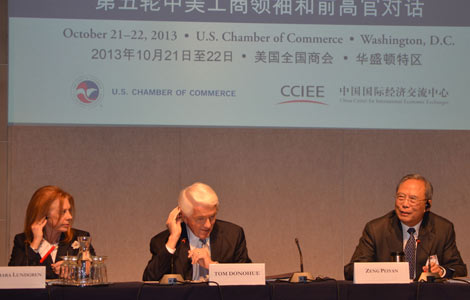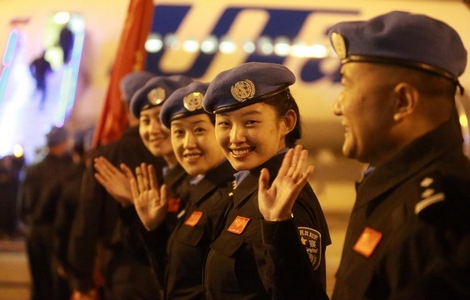Dialogues boost cultural exchange
Updated: 2013-10-24 07:35
By Zhang Zixuan (China Daily USA)
|
||||||||
China and Europe have made another big step forward in cultural cooperation after the successful conclusion of the 5th European-Chinese Cultural Dialogue held from Oct 16 to 19 in Xi'an, Shaanxi province.
With the themes Space, Culture and Object, keynote speakers from China and Europe explored the differences between Chinese and European perceptions on a range of issues that fell into four sub-topics: public space and urban design, plastic arts and sustainable development, creative industry and art education and heritage protection, and regional culture.
Established in 2008, the European-Chinese Cultural Dialogue is aimed at bringing together intellectuals, cultural practitioners and cultural policymakers from Europe and China to strengthen cultural cooperation and develop people-to-people relations.
The first meeting took place in Beijing, followed by sessions in Copenhagen, Shanghai and Luxembourg.
This year's dialogue was hosted by the European Union National Institutes for Culture and the Chinese National Academy of Art, and co-organized by Xi'an Academy of Fine Arts and Xi'an Tang West Market Culture Industry Investment Co.
EUNIC is the network of the European national institutes for culture formed in 2006. Having 32 members from 26 countries that are based in more than 150 countries with some 2,000 branches and thousands of local partners, EUNIC is aimed at expanding the role of culture in Europe and to strengthen cultural dialogue, exchange and sustainable cooperation worldwide.
CNAA is China's State-level interdisciplinary academic institution covering art studies, art education and art creation.
"China and Europe both have profound cultural traditions. The two also have a long history of cultural exchanges," says CNAA executive vice-president, Wang Nengxian. "We can only reach mutual understanding and respect through such diversified and intercultural dialogues and exchanges."
Academics, artists and policymakers from China and Europe exchanged ideas on issues, such as the challenge and opportunity faced by art creation, the development and utilization of city public spaces, and how technology integrating with creative industry.
In the group session of Heritage Protection and Regional Culture, for example, Chinese and European experts shared opinions on cultural heritage protection and interaction with modern life.
Shaanxi Art Institute director Ding Kemin raised the dilemma of how to conserve 1,300-year-old Xi'an drum music, seeking effective solutions from the European side.
EUNIC global office director Helena Kovarikova suggested a creative cooperation project, in addition to overseas performance opportunities.
"It's also important to have new contexts and bring new messages that relate to modern life," Kovarikova says. "We hope our talks can be transferred into actual projects with the help of the dialogue."
CNAA's deputy director, Jia Leilei, introduced China's three strategies of intangible cultural heritage conservation: policy protection, productive protection and rewarding protection. He also spoke about China's digitalization project of the Forbidden City and other cultural heritage, such as ancient books and folk music.
"China and Europe may inevitably have some conflicts of interest in certain areas, but we do not want to add more conflicts in culture, when they come from misunderstandings and cultural differences," Jia says.
"It's obvious that in the cultural and creative industries sector, there is a huge potential for cooperation. The new technologies are closely related to arts: not only in terms of creation like in the new images sector, but also in terms of heritage conservation," says EUNIC's president, Charles-Etienne Lagasse.
It was a sentiment echoed by Gudrun Hardiman-Pollross, cultural affairs counselor of Austrian embassy in Beijing and head of the Austrian Cultural Forum.
"We're trying to find new ways to cooperate with China, and we shall bring these good discussions to the next dialogue," says Hardiman-Pollross.
zhangzixuan@chinadaily.com.cn
(China Daily USA 10/24/2013 page10)
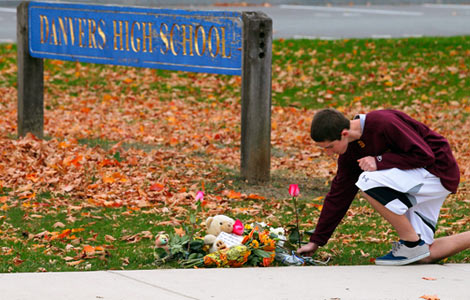
 Mass. teacher slain; 14-year-old student charged
Mass. teacher slain; 14-year-old student charged
 Latin American clown convention
Latin American clown convention
 Driven by smiles
Driven by smiles
 Camp gives sporting chance for students headed overseas
Camp gives sporting chance for students headed overseas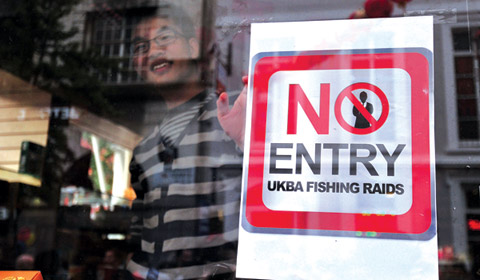
 Chinese protest UK 'fishing' raids
Chinese protest UK 'fishing' raids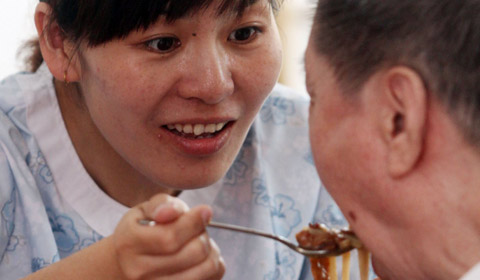
 Caretakers in need of counseling
Caretakers in need of counseling Pumpkin fun ahead of Halloween
Pumpkin fun ahead of Halloween
 Weakening Raymond soaks Mexico, no serious damage
Weakening Raymond soaks Mexico, no serious damage
Most Viewed
Editor's Picks
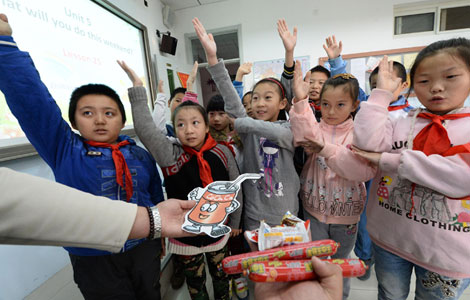
|
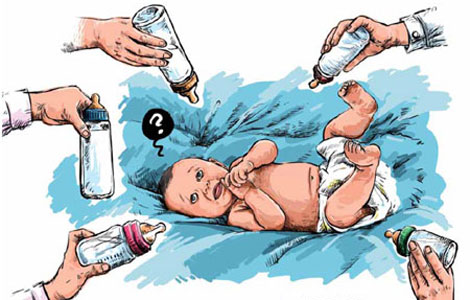
|

|

|

|

|
Today's Top News
China's GDP growth to 7.6%: Standard Chartered
Scholar looks at the kung fu-hip hop connection
Mobile giants talk future in Frisco
Starbucks' pricing furor: tempest in a coffee pot
100,000 Strong student exchange picks first partners
Report: China could profit rebuilding US
US-China trade talks a 'turning point'
Steady growth the goal for GDP
US Weekly

|

|
